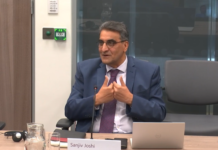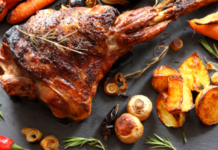The restaurant industry is ever-evolving and constantly implements new changes to appeal to the preferences of its customers. This involves creating enticing menus that visually and verbally appeal to guests. Certain tricks in their menus allow restaurants to subtly nudge customers into enjoying a fuller dining experience, consequently increasing their spending.
To help consumers avoid falling for these tricks that restaurants are known for and help keep more money in their pockets, we reached out to an expert at Menu-Price who gave us valuable insights on the restaurant tricks that are used to get buyers to spend more.
Value Menus
Restaurants introduce value menus with meals of different price points. The restaurant hopes that such an arrangement will motivate customers to opt for the priciest range of the value menu, which has more options, or to bypass the value menu entirely due to its limited options. This strategy ultimately translates into increased profitability.
“If a restaurant’s value menu features items like burgers, pizza, and spaghetti, but your preference leans towards a steak, you’ll find yourself ordering the steak at its regular cost, bypassing the value menu. This scenario directly contributes to a higher profit for the restaurant.,” says a Menu Price expert.
Emphasis on Certain Menu Items
Restaurants strategically highlight specific dishes, often those with higher profit margins, drawing customer attention to these preferred items through menu placement and design cues.
The Use of Color
Warm hues like red and yellow can trigger hunger, while cooler shades like blue make meals seem more refreshing. Strategically deploying these colors in their menus helps restaurants subtly sway customer choices.
Photographs Used Sparingly
To maintain a sophisticated aesthetic, restaurants use photographs sparingly, only emphasizing selected dishes, making them more appealing to the eye and tastebuds alike.
Descriptive Language
Vivid descriptions of dishes can create a compelling image in customers’ minds, making the menu items more appealing and increases the likelihood of ordering.
Avoiding Dollar Signs
Menus without currency symbols can encourage higher spending, as prices appear less intimidating.
“Keep a close eye on prices, even when restaurants fail to integrate dollar signs. This can help you avoid paying more than you want for a meal,” says a Menu Price expert.
Anchor Items
Restaurants place some of their most expensive items next to even more costly options.
“When customers see a pricey dish positioned next to an even more expensive option, they are more likely to perceive the less costly of the two as a ‘better deal,” says a Menu Price expert.
Use of Boxes
Boxes and borders draw attention to specific items, creating a visual ‘stage’ that makes these dishes stand out.
“This technique is often applied to high-profit items, specials, or unique offerings,” says a Menu Price expert.
Keeping Portion Sizes Secret
Restaurants offer full or half salads or sandwiches without revealing the portion sizes. Despite any clear explanation, consumers assume that half sizes are overpriced and the full size is more cost-effective.
“Customers perceive they are getting a better deal without even knowing the real serving size of the food options,” says a Menu Price expert.
Difficult-to-Read Font
Using complex fonts in menus can slow customers’ reading, promoting more profound engagement with dish descriptions. This added interaction can enhance dishes’ perceived worth and exclusivity, thereby subtly inspiring a readiness to spend more.
Remain vigilant during your next dining experience and see how many of these subtle tricks you can spot and how much money you can save on your meal.
Help keep news FREE for our readers
Supporting your local community newspaper/online news outlet is crucial now more than ever. If you believe in independent journalism, then consider making a valuable contribution by making a one-time or monthly donation. We operate in rural areas where providing unbiased news can be challenging. Read More About Supporting The West Wales Chronicle

























